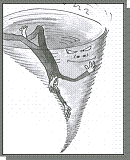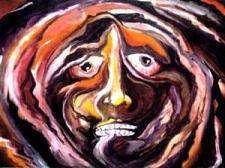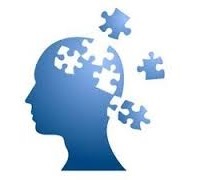 According to the cognitive behavioural therapy (CBT) approach to anxiety, one of the reasons that overcoming anxiety can be so difficult is that anxiety generates vicious cycles involving your physiological, cognitive, behavioural, and emotional domains. We looked at these four components of anxiety in a previous post. Now we’ll look at how they act together to form vicious cycles that create and maintain anxiety.
According to the cognitive behavioural therapy (CBT) approach to anxiety, one of the reasons that overcoming anxiety can be so difficult is that anxiety generates vicious cycles involving your physiological, cognitive, behavioural, and emotional domains. We looked at these four components of anxiety in a previous post. Now we’ll look at how they act together to form vicious cycles that create and maintain anxiety. The Vicious Cycle of Anxiety
 According to the cognitive behavioural therapy (CBT) approach to anxiety, one of the reasons that overcoming anxiety can be so difficult is that anxiety generates vicious cycles involving your physiological, cognitive, behavioural, and emotional domains. We looked at these four components of anxiety in a previous post. Now we’ll look at how they act together to form vicious cycles that create and maintain anxiety.
According to the cognitive behavioural therapy (CBT) approach to anxiety, one of the reasons that overcoming anxiety can be so difficult is that anxiety generates vicious cycles involving your physiological, cognitive, behavioural, and emotional domains. We looked at these four components of anxiety in a previous post. Now we’ll look at how they act together to form vicious cycles that create and maintain anxiety. 
 Cognitive behvioural therapy (CBT), sometimes called cogntive therapy, is a type of thereapy that focuses on how various factors within us and our environment interact with each other to to produce and maintain many issues that people struggle with such as anxiety and depression.
Cognitive behvioural therapy (CBT), sometimes called cogntive therapy, is a type of thereapy that focuses on how various factors within us and our environment interact with each other to to produce and maintain many issues that people struggle with such as anxiety and depression.
 Ccognitive behavioural therapy (CBT), or cognitive therapy, focuses on the relationships and connections between our thoughts, feelings, actions, and our body. This sounds simple, but what does it mean?
Ccognitive behavioural therapy (CBT), or cognitive therapy, focuses on the relationships and connections between our thoughts, feelings, actions, and our body. This sounds simple, but what does it mean?